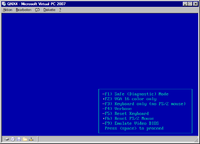QNX
QNX is a POSIX influenced real-time OS; it uses the microkernel approach to building an OS. Originally developed in the early 1980s, it is now a commercial product, targeted at embedded system uses.
It was created by the Canadian company Quantum Software Systems (which was later renamed QNX Software Systems). It was used as the OS for the Unisys ICON computer systems in Ontario High schools. In April, 2010, QNX Software Systems was acquired by Research In Motion (which was later renamed to BlackBerry Limited).
Contents
History
- 1982: Quantum Software - QUNIX for Intel 8088
- 1984: QUNIX was renamed to QNX
- 2004: QNX is acquired by Harman International Industries
- 2010: QNX is acquired by BlackBerry
QNX 4
Versions of QNX 4 were released between 1990 and 1997. QNX 4.24 was used as the origin of QNX/Neutrino. Future versions (except for 4.25) are based on the QNX/Neutrino fork.
Latest Version: 4.25
QNX 6
Versions of QNX 6 were released between 2001 and 2014, based on the QNX/Neutrino fork. Neutrino added support for MIPS, PowerPC, SH-4, and ARM CPU architectures.
This should be what RIM has purchased for use in the Playbook tablet.
Latest Version: 6.6
QNX 7
QNX 7 is the current version, initially released in 2017. Supported CPU architectures include 32-bit and 64-bit ARM, and 64-bit x86.
Latest Version: 7.1 (2020)
